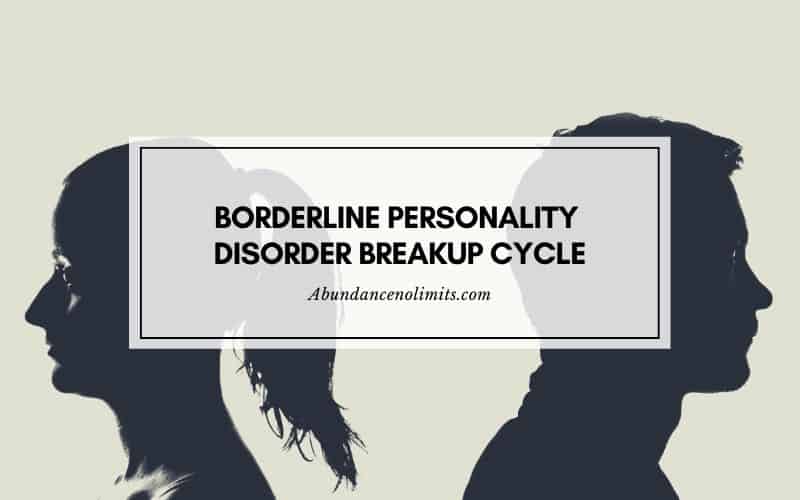Relationships are hard to maintain even for healthy and normal individuals. It would be exponentially difficult when one of the partners is suffering from Borderline Personality Disorder.
A BPD partner thinks, feels, and behaves differently from normal individuals. Though Borderline Personality Disorder is a treatable mental health condition, often it goes undiagnosed and untreated, leading to various issues for the individual and their relationship.
The typical characteristics of Borderline Personality Disorder are self-loathing, difficulty in managing emotions, out-of-control behavior, and unhealthy and unstable relationships. A common behavior found among those with BPD is “splitting countertransference”, also known as “splitting”.
When a BPD partner experiences “splitting”, it can only lead to the worsening of the relationship and ultimately a breakup. The whole relationship experience of a person with Borderline Personality Disorder is termed the Borderline Personality Disorder relationship cycle. As it often ends up in a breakup, it is also called a breakup cycle.
This article explains BPD splitting and how it leads to a Borderline Personality Disorder breakup cycle.
BPD relationships: From the beginning to the end
As can be expected, the beginning and end of a relationship with a BPD partner will be equally intense. However, the nature of intensity will be at the two extreme ends of the love spectrum. While in the beginning, it will be love and euphoria, in the end, it would be disgust and anger. Someone they couldn’t live without in the beginning will turn into someone they can’t live with.
When they meet their potential partner for the first time, a BPD partner may think that they are everything they ever wanted in their life. They will feel overjoyed to have found the perfect partner. There would be a great deal of excitement, enthusiasm, and commitment.
As days, weeks, and months go by, this excitement and enthusiasm start fading for many reasons. Their own behavioral traits may create roadblocks in the relationship.
How does a BPD relationship break up?
Ghosting
A BPD partner is more likely to disappear without a trace for short or long periods. The reasons for this are numerous. The BPD partner may feel betrayed by their partner. This can be real or perceived. As communication is a challenge in a BPD relationship, that also compounds the situation. The deficiency in communication can give rise to discomfort, tension, and avoidance in the relationship during this delicate period.
The same borderline personality relationship pattern will be visible in non-romantic relationships with BPD people as well. It is an uphill task for a BPD person to maintain healthy friendships or family ties for a long time. When their attitude towards the other person changes for whatever reason, they will “ghost” them. That will sound the death knell for the relationship.
Splitting
Another major reason for breaking up in a BPD relationship is splitting. The BPD partner may start seeing people, things, and incidents in black and white. Either they are all good or all bad. No gray areas in between. The typical signs of splitting are the words they use in their conversation. Never/always, none/all, and bad/good.
Splitting is believed to be an unconscious attempt by the BPD partner to safeguard their ego and contain anxiety. Such behavior can leave the partner feeling confused, annoyed, and hurt by the overnight shift in attitude. This can lead to extreme, and often harmful, behavior and uneasiness and disruption in the relationship.
Today’s friend may be viewed as an enemy tomorrow. Today’s perfect partner may turn out to be the worst one overnight. Splitting can lead to:
- Irrational fear of others
- Inability to trust others
- Terminating communication with others believing they will abandon them
- Instantaneous transformation of feelings about others from love and affection (idealization) to extreme hatred and anger (devaluation)
- Hasty initiation of emotionally and/or physically intimate relationships
BPD relationship cycle
A BPD relationship cycle encapsulates the highs of the beginning and the lows of the end. One day they will love you insanely and the next day they will see you as the devil incarnate and reject you. This may leave you feeling frustrated and confused. The fast-changing perceptions and equations can be too much to handle for a normal person.
This relationship cycle is also called the Borderline Personality Disorder breakup cycle as it will eventually lead to a breakup. The breakup may be initiated by either the BPD partner or the normal partner.
Idealization:
The typical start of a relationship cycle is idealization. This involves boosting or hyping up the characteristics and qualities of the new partner. The BPD partner will find them perfect and believe firmly that they can do no wrong. They will feel that this is the person of their dreams that they have been waiting all their life for “the One”.
In return, the BPD partner gets the love, care, support, and devotion they yearn for. This phase in the BPD cycle may last for as short as a few days to as long as a few months. Eventually, devaluation happens.
Devaluation:
This is the beginning of the end of the BPD relationship cycle. This is when the BPD partner develops negative thoughts about the partner and loses love and respect for them. The underlying reasons for borderline personality relationship pattern can be real or imagined or a combination of both.
As they get wrong notions about their partner, a BPD partner tends to pick fights. This may result in them withdrawing and disappearing from the relationship, often referred to as “ghosting”. This will set in motion the process of the breakup.
Similar to the initial phase, emotions run high in this last phase as well. Instead of positive emotions, this time round it will be of the negative kind. Instead of joy and excitement, it will be betrayal, hopelessness, and anger.
The BPD breakup cycle is quite painful for both partners. It is considered a coping mechanism in a BPD partner to avoid abandonment.
BPD rage cycle:
The emotions riding high and low create disruptions in a BPD relationship leading to its breakup. Though emotions hold key to most personality disorders, in BPD, the effect is devastating due to its speed. Moods shift with lightning speed for a BPD partner, which can be difficult for a normal person to comprehend and handle.
This change in sudden transformation in perceptions of a BPD partner is called the BPD rage cycle. This involves regarding someone with love, admiration, and respect one day, only to feel a few days later, an overwhelming sense of disgust, hatred, horror, and anger. The worst part about this change is that it happens without a valid or concrete reason.
This complete reversal in attitude is a relationship killer for sure.
Treating Borderline Personality Disorder breakup cycle
Though BPD splitting and Borderline Personality Disorder breakup cycle may seem frustrating and alarming to an observer and players alike, there is good news for those affected by this mental health condition.
BPD is a treatable personality disorder, unlike many less severe ones. This gives hope to those trapped in a BPD relationship pattern. However, unlike other personality disorders, BPD doesn’t come with a standard protocol of medication. It relies almost completely on various kinds of therapies, including the highly recommended Cognitive Behavioral Therapy.
Antidepressants can do a good job of containing depression in a BPD person. However, therapy, whether individual or group therapy, is more effective in treating the specific symptoms of BPD. The reason is simple. An unhealthy coping mechanism is the root cause of BPD. Only therapy can work on this and transform it into a healthy coping mechanism, thus eliminating the symptoms of BPD.
Final thoughts on borderline personality disorder breakup cycle
Borderline Personality Disorder is a frustrating and terrifying mental health disorder. Once a relationship enters the borderline personality disorder breakup cycle, it’s hard to escape from the obvious outcome.
However, it’s treatable and the best chance for a person with Borderline Personality Disorder to lead a normal life is to seek treatment at the earliest.
Related:


